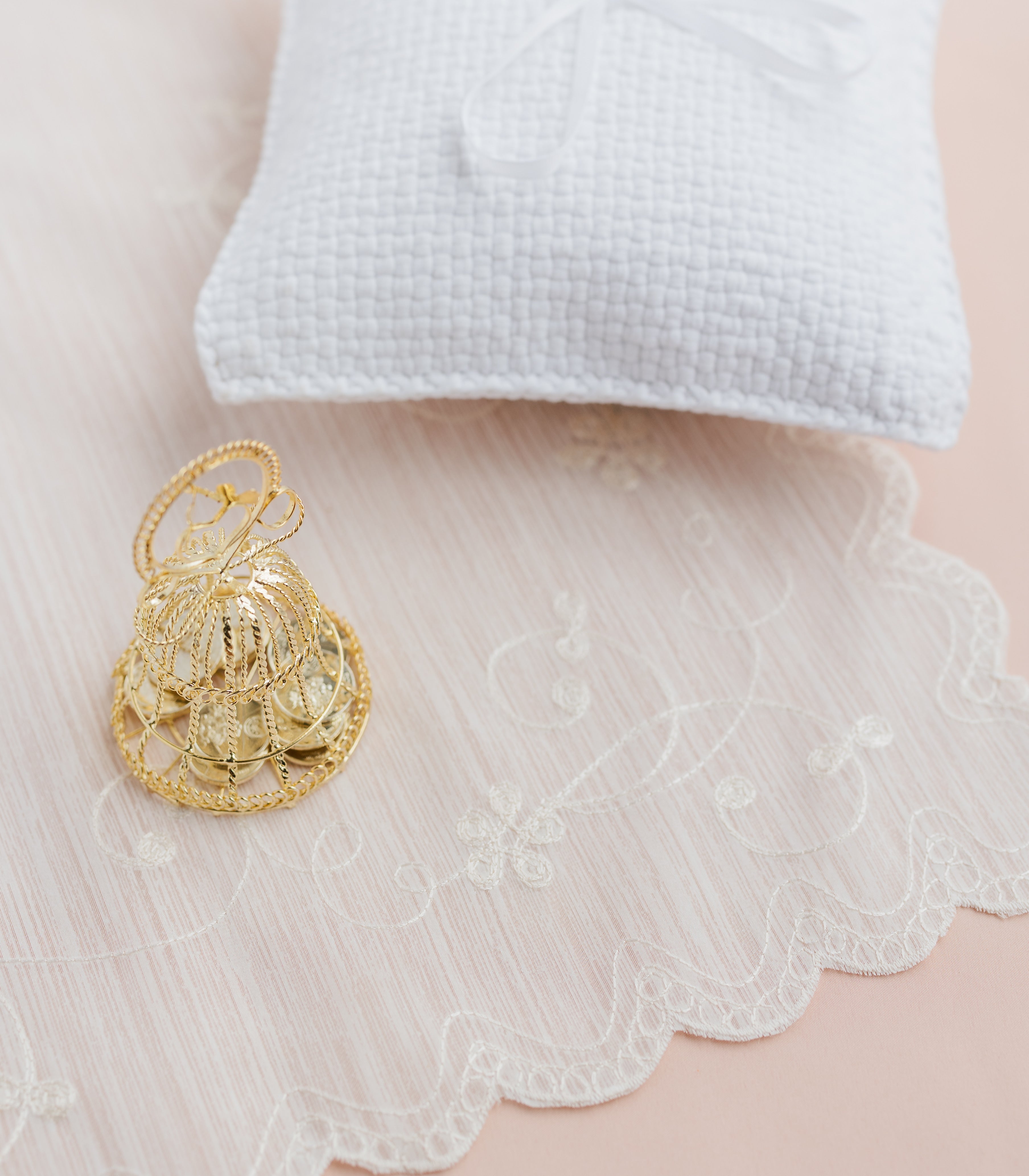Filipinos love any reason to get together with friends and family to eat food, especially when it comes to Filipino weddings and Christmas! They say any month that ends in R is Christmas time in the Philippines, so if you’re getting married between September-December, you have a holiday wedding on your hands!
The Filipino Christmas tradition of Noche Buena, or Good Night, is a huge feast after Midnight Mass on Christmas Eve involving traditional Filipino foods like lechon, kakanin, queso de bola, puto bumbong, arroz valenciana, and more.
The pandemic has made large gatherings with all your Titas and Titos, known and unknown, quite difficult. That doesn’t mean you can’t still celebrate an intimately sized micro wedding or Zoom nuptials with stylish food that honors your Filipino heritage and our culture’s contagious Christmas spirit.
Here is a Christmas Filipino Wedding menu featuring your favorite Christmas Classics with a modern, photo-friendly twist. This menu was designed with micro weddings in mind, meaning it’s quick, easy, and can be done without a caterer or all of your extended family.
First Course: A Super Cute Filipino Charcuterie Board

Talk about charcute-cute naman! Queso de bola, or Edam cheese, is probably the most Filipino cheese there is. Many of our foods have Chinese or Spanish origins, but Queso de Bola is actually a Dutch cheese that made its way to the Philippines on Galleons when the Dutch fought maritime battles with the Spanish in the 1600’s.
Regardless of where it came from, it is now a staple food item in many Filipino households at Christmas. When it comes to a wedding, of course a ball of cheese is no replacement for the money dance, but the red wax symbolizes money and the round shape brings good luck. Very fitting for the start to a prosperous marriage!
Serve your Queso de Bola on a charcuterie board by combining a mix of Filipino and European ingredients. Use Sky Flakes for a neutral cracker, mango chutney or jam with goat cheese, and chorizo and cashews for a salty complement.
For the truly adventurous, try adding bleu cheese and dried Filipino anchovies, known as dilis! Ham slices and crunchy biscocho are fabulous callbacks to the traditional ham, pan de sal, and cheese.
(Biscocho are twice-baked Filipino bread slices with a crispy cracker-like texture that make it suitable for a charcuterie board.)

Drink pairing: Get Ready to Rambutan With A Sparkling Lychee Cocktail!

The party is about to get started so grab a tin of lychees and a bottle of sparkling wine. A toast to the married couple calls for bubbles, as does a charcuterie board. Combine a tablespoon of syrup to a flute of sparkling wine and garnish it with one lychee.
Second Course: Arroz Valenciana

Throwing raw rice at the newly married couple is a wedding tradition meant to bring them prosperity and fertility in their new life.
“Sayang naman yung kanin! What a waste of rice!” you might expect some relatives to say.
Rather than throwing it in the air, cook it into Arroz Valenciana, which also happens to be a Christmas staple. It is the Filipino version of Valencian Paella, a dish from the Coastal Spanish town of Valencia. While Spanish Paella is typically associated with seafood, the Filipino version uses chorizo, chicken, and hard-boiled eggs.
Arroz Valenciana can certainly stand on its own but no one ever says no to more food! Feel free to serve side dishes to complement the menu. Traditional Filipino foods like lumpia, lechon, and embutido are just a few ideas.
Drink pairing: Say P.S. I Love You With Filipino Sangria!

The P.S. stand for Pinoy Sangria. In keeping with the Spanish influence of the main course, the drink pairing pays homage to the famous Spanish wine cocktail but with a Filipino Christmas twist. Buko and fruit salads are always found at Noche Buena so incorporate it into your sangria by combining a can of fruit salad, one bottle of red wine, and a ¼ cup of a citrus liqueur such as Triple Sec. Add calamansi for garnish and pucker.
Dessert: Beautiful, Bare, and Blossomed Bibingka

Buying a full, multi-tiered wedding cake might leave you with months-worth of cake leftovers if you’re hosting a micro wedding. While everybody loves extra cake, 3 tiers to yourself may be a bit much. That being said, no wedding is complete without a cake, just as no Noche Buena is complete without Bibingka galapong, or rice cake.
You can combine the best of both worlds for a simple, yet elegant DIY Bibingka Naked Cake.
While bibingka is usually a single layer served with coconut and salted duck eggs, this DIY cake adds multiple layers and incorporates the coconut flavor into a light frosting. No cake decorating tools are required. You just need a box of bibingka mix, three 6-inch cake pans, lots of butter, powdered sugar, coconut milk, a straight edge, and sixty minutes. The New York Times also has an excellent recipe if you want to make your bibingka from scratch!
Adding edible flowers like roses, hibiscus, and carnations elevates the aesthetic to something wedding photo worthy.
Drink pairing: Naughty Tsokolate

Is there anything more cozy than a cup of tsokolate on a Christmas night? Does anything say “I love you” more than a box of deluxe chocolates? As we close out your wedding’s dinner menu, cozy up to the one you love while sipping on this dessert cocktail. Using the traditional tablea and combining it with milk and Bailey’s Irish Cream makes for chocolatey, boozy bliss. Enjoy bites of Bibingka between each sip and you’ll be in heaven.
A wedding is one of the most important days in a person’s life. Despite a pandemic, you can still elevate your holiday wedding cuisine with the bonus of feeling a sense of ownership and connection that you just would not have if you outsourced the cooking. Food IS the Filipino love-language, after all.

To catch the full grocery list, recipes, and cake decorating tutorial, visit the full blog post on Egg Marks the Spot to put together this three-course Filipino wedding menu of your own.
Want more resources and tips like these to plan your Filipino wedding? Subscribe to our email newsletter below.
Christina de los Reyes

Tina de los Reyes is the baker, writer, and photographer behind the Filipino food blog Egg Marks the Spot. She is a daughter of Filipino immigrants, Ate, plant nanay, sawsawan hoarder, list maker, and lover of all eggs. While she completed a Masters in Biomedical Diagnostics and works in the field of genetics, baking is truly what is in her DNA. You can also catch Tina on Instagram @eggmarksthespot



Leave a comment